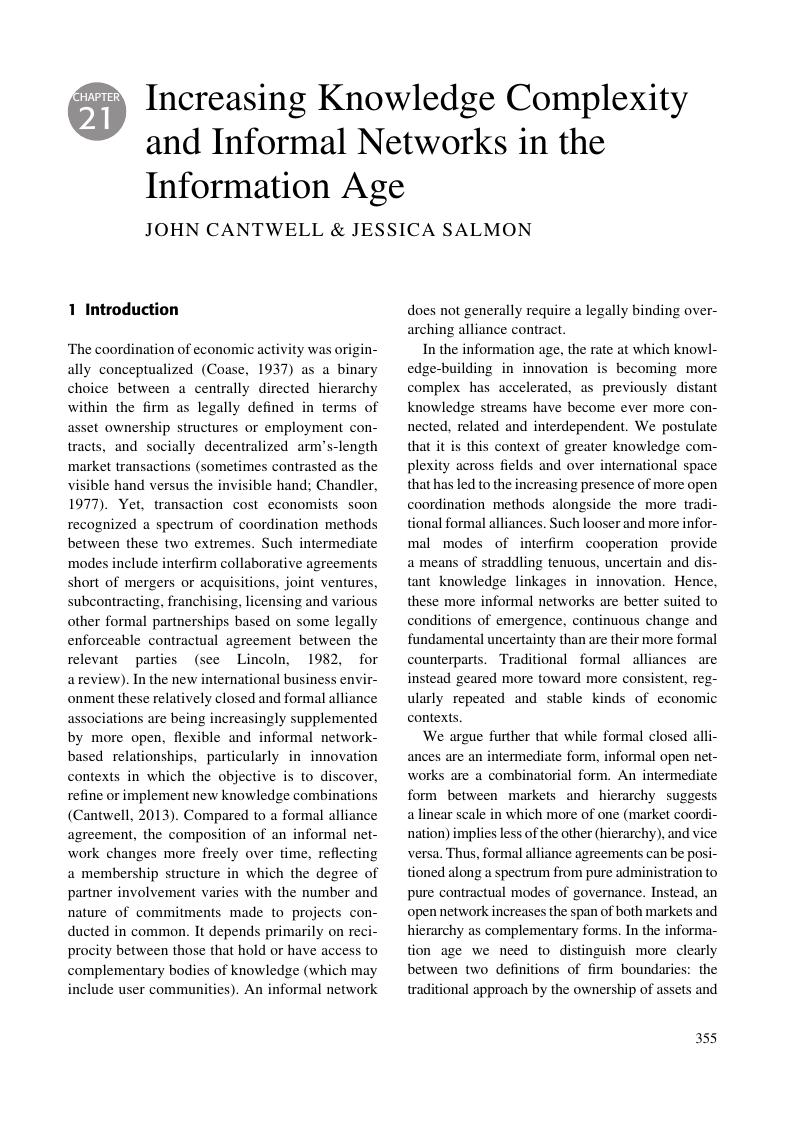Book contents
- Frontiers of Strategic Alliance Research
- Frontiers of Strategic Alliance Research
- Copyright page
- Dedication
- Contents
- Figures
- Tables
- Contributors
- Preface
- Part I Theory and Future Directions in Alliance Research
- Part II Alliances in the Context of Rapid Technological Change and Disruptions
- Part III Microfoundational Processes and Coordination between Partners
- Part IV Alliance Management Capability
- Part V Alliance Scope
- Part VI Alliance Portfolios and Multilateral Alliances
- Part VII Multimarket Competition and Multinational Alliances
- Part VIII Innovation Networks and Alliances
- 21 Increasing Knowledge Complexity and Informal Networks in the Information Age
- 22 Characteristics of Innovation-Driven Interfirm Alliances, 1957–2006
- Part IX Fostering Trust and the Impact of Culture
- Part X The Evolution, Survival or Termination of Alliances
- Part XI Public–Private Partnerships
- Index
- References
21 - Increasing Knowledge Complexity and Informal Networks in the Information Age
from Part VIII - Innovation Networks and Alliances
Published online by Cambridge University Press: 01 March 2019
- Frontiers of Strategic Alliance Research
- Frontiers of Strategic Alliance Research
- Copyright page
- Dedication
- Contents
- Figures
- Tables
- Contributors
- Preface
- Part I Theory and Future Directions in Alliance Research
- Part II Alliances in the Context of Rapid Technological Change and Disruptions
- Part III Microfoundational Processes and Coordination between Partners
- Part IV Alliance Management Capability
- Part V Alliance Scope
- Part VI Alliance Portfolios and Multilateral Alliances
- Part VII Multimarket Competition and Multinational Alliances
- Part VIII Innovation Networks and Alliances
- 21 Increasing Knowledge Complexity and Informal Networks in the Information Age
- 22 Characteristics of Innovation-Driven Interfirm Alliances, 1957–2006
- Part IX Fostering Trust and the Impact of Culture
- Part X The Evolution, Survival or Termination of Alliances
- Part XI Public–Private Partnerships
- Index
- References
Summary

- Type
- Chapter
- Information
- Frontiers of Strategic Alliance ResearchNegotiating, Structuring and Governing Partnerships, pp. 355 - 369Publisher: Cambridge University PressPrint publication year: 2019

